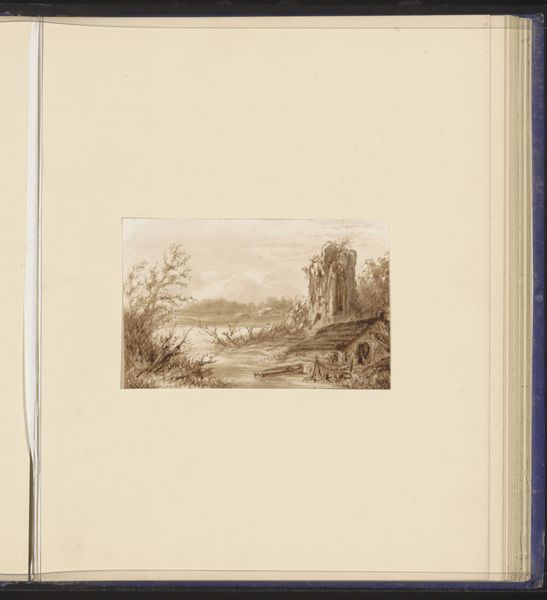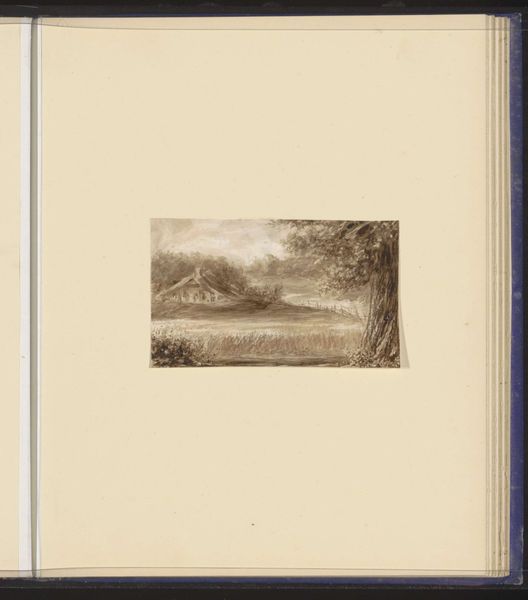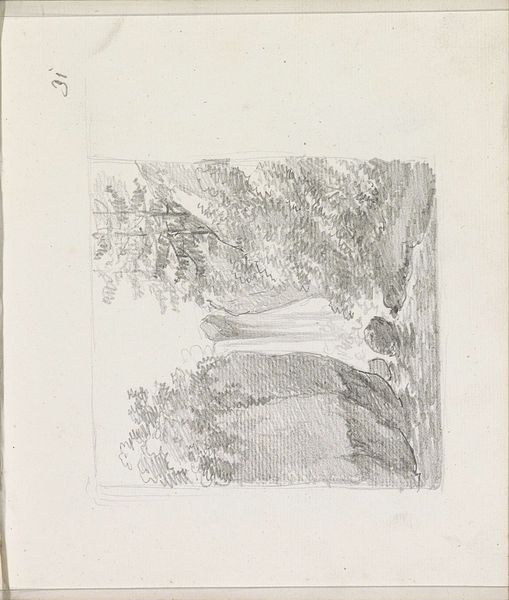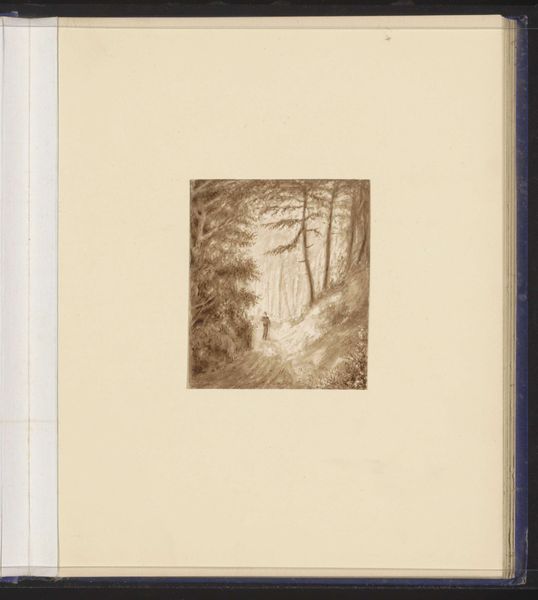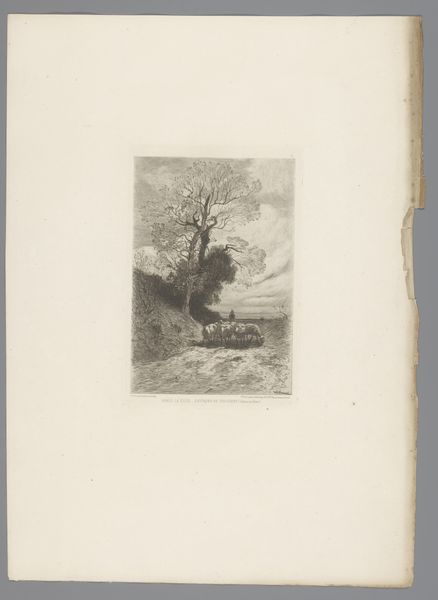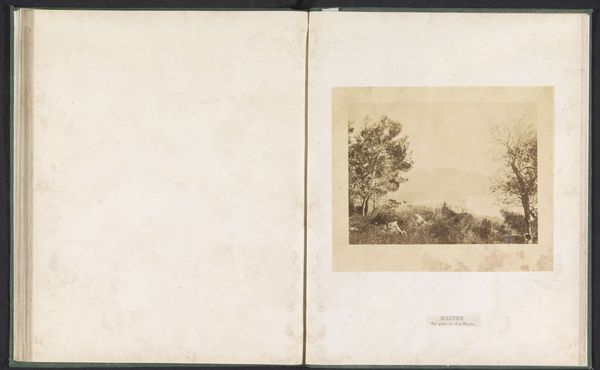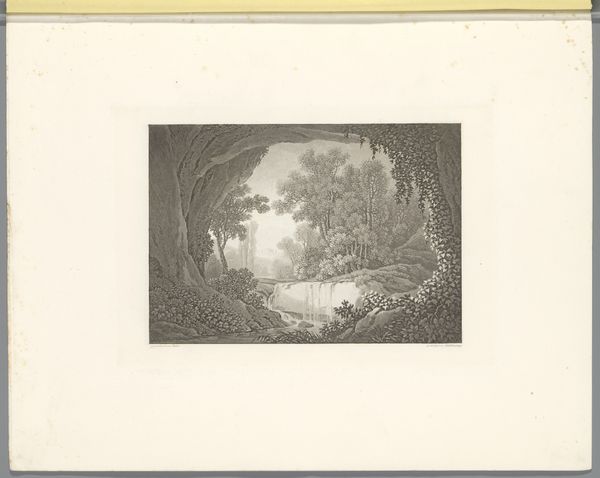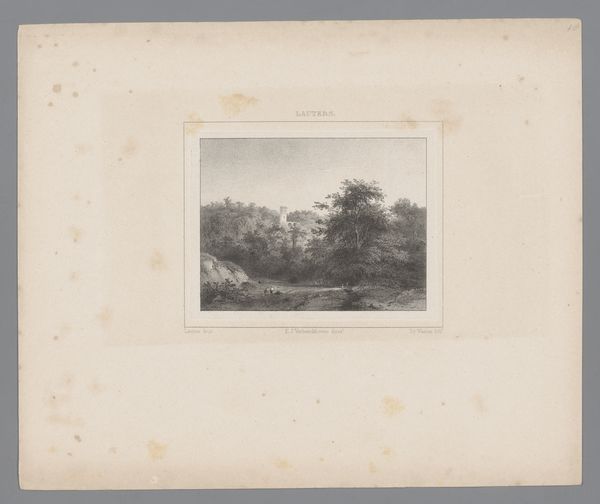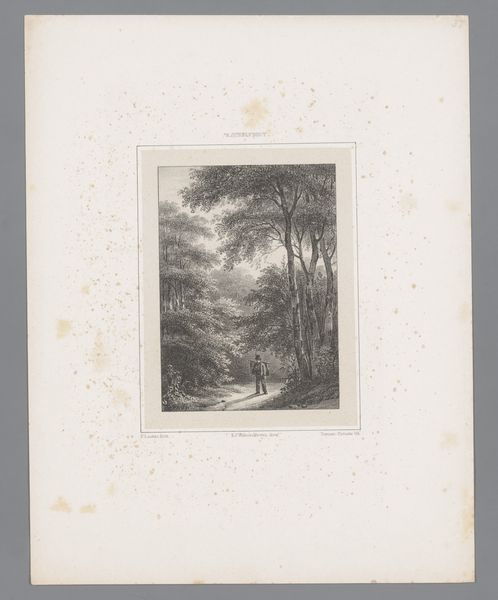
Dimensions: height 120 mm, width 99 mm
Copyright: Rijks Museum: Open Domain
Editor: So, this is Alexander Ver Huell's "Wandelaar op een pad langs een rivier," or "Wanderer on a Path Along a River," created in 1882 using watercolor and coloured pencil. It feels like a very intimate, almost personal, scene. What stands out to you in this piece? Curator: What strikes me is how this very personal, almost quaint image, participates in broader 19th-century artistic trends that served specific social functions. The solitary figure walking along the river...consider the Romantic movement and its idealization of nature, especially as a space for contemplation and spiritual renewal. But for whom was this renewal intended? Editor: You mean, who had access to nature, both literally and in terms of art? Curator: Exactly! Landscape paintings became increasingly popular amongst the bourgeoisie, who were keen to project and secure an image of themselves as refined, sensitive individuals with the means and time for leisure and appreciation of the natural world. It's not just about beautiful scenery, but about claiming cultural capital. Does that make sense? Editor: Yes, it's like the act of appreciating art and nature became another marker of class. And even the use of watercolor and colored pencil – it's very portable, something that a person of leisure could do outdoors. Curator: Precisely! The medium itself is tied to specific social practices. These seemingly innocuous details actually communicate very powerful ideas about belonging and identity. What did you think you understood about it when you first approached this work? Editor: I thought it was simply a peaceful scene. I definitely have a new understanding about the socio-political implications behind art like this and the projection of class. Curator: It shows us that behind seemingly simple images, lie layers of social history waiting to be uncovered. It certainly changes our understanding when viewing such art in the future.
Comments
No comments
Be the first to comment and join the conversation on the ultimate creative platform.
